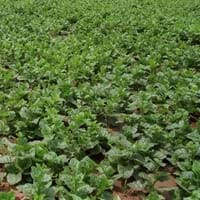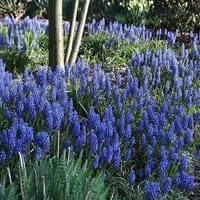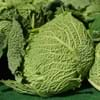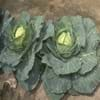Life Span
Perennial
Perennial
Type
Vegetable
Bulb or Corm or Tuber
Origin
Southeastern Asia, India
Mediterranean, Southeastern Asia
Types
Red Malabar Spinach, Green Malabar Spinach
Not available
Habitat
Hot climate regions, Humid climates
Fields, Open areas, Terrestrial
USDA Hardiness Zone
Not Available
Not Available
AHS Heat Zone
12*7
Not Available
Sunset Zone
H1, H2, 3a, 3b, 4, 5, 6, 7, 8, 9, 10, 11, 12, 13, 14, 15, 16, 17, 18, 19, 20, 21, 22, 23, 24
21,22
Habit
Vining/Climbing
Clump-Forming
Minimum Height
Not Available
Minimum Width
Not Available
Flower Color
Red, Green, Orange Red
White, Yellow, Blue, Purple, Pink, Olive, Blue Violet
Flower Color Modifier
Bicolor
Bicolor
Fruit Color
White, Ivory
Brown, Black
Leaf Color in Spring
Green, Light Green
Not Available
Leaf Color in Summer
Green, Dark Green
Light Green
Leaf Color in Fall
Purple, Gray Green
Several shades of Green
Leaf Color in Winter
Purple, Gray Green
Light Green
Leaf Shape
Heart-shaped
Narrow
Plant Season
Spring, Summer, Fall, Winter
Not Available
Sunlight
Full Sun, Partial Sun, Partial shade
Full Sun, Partial Sun
Growth Rate
Fast
Not Available
Type of Soil
Clay, Loam
Not Available
The pH of Soil
Neutral
Not Available
Soil Drainage
Well drained
Well drained
Bloom Time
Not Available
Not Available
Tolerances
Drought
Drought
Where to Plant?
Ground
Container, Ground, Pot
How to Plant?
Leaf Cutting, Seedlings
From bulbs, From Rhizomes, Seedlings
Plant Maintenance
Medium
Medium
Watering Requirements
Do not let dry out between waterings, Requires consistently moist soil
Get enough water whenever the soil is dry, Keep the ground moist but not water-logged, Keep the Soil well drained
In Summer
Average Water
Lots of watering
In Spring
Moderate
Moderate
In Winter
Average Water
Average Water
Soil pH
Neutral
Not Available
Soil Type
Clay, Loam
Not Available
Soil Drainage Capacity
Well drained
Well drained
Sun Exposure
Full Sun, Partial Sun, Partial shade
Full Sun, Partial Sun
Pruning
Remove damaged leaves, Remove dead leaves
Remove damaged leaves, Remove dead branches, Remove dead leaves
Fertilizers
Nitrogen
All-Purpose Liquid Fertilizer
Pests and Diseases
Aphids
Armored scales, Crown rot, Slugs
Plant Tolerance
Drought
Drought
Flower Petal Number
Single
Single
Foliage Texture
Medium
Medium
Foliage Sheen
Glossy
Glossy
Attracts
Not Available
Bees, Butterflies
Allergy
Not Available
Diarrhea, Itchiness, Skin irritation, Stomach pain, Vomiting
Aesthetic Uses
Not Used For Aesthetic Purpose
Cottage Garden, Landscape Designing
Beauty Benefits
Not Available
Not Available
Environmental Uses
Air purification
Air purification
Medicinal Uses
Folate, Iron, Low calories, Low Fats, Rich in Potassium, ß-carotene, Vitamin A, Vitamin C
Diuretic, Stimulates new cell growth
Part of Plant Used
Leaves
Buds, Flowers
Other Uses
Used As Food
Traditional medicine, Used for fragrance
Used As Indoor Plant
No
Yes
Used As Outdoor Plant
Yes
Yes
Garden Design
Container, Edible, Groundcover, Herb / Vegetable, Tropical, Vine
Container, Cutflower, Mixed Border, Rock Garden / Wall
Botanical Name
BASELLA alba
MUSCARI
Common Name
Ceylon Spinach, Malabar Spinach, Red Malabar Spinach
Grape Hyacinth
In Hindi
पोई
अंगूर जलकुंभी
In German
Malabarspinat
Traubenhyazinthen
In French
L’épinard de Malabar
Muscari
In Spanish
espinaca de Malabar
Muscari
In Greek
Malabar Σπανάκι
grape hyacinth
In Portuguese
Malabar espinafre
Muscari
In Polish
Szpinak Malabar
Szafirek
In Latin
Spinach Malabar
Muscari
Phylum
Magnoliophyta
Tracheophyta
Class
Eudicotyledones
Magnoliopsida
Order
Caryophyllales
Asparagales
Family
Basellaceae
Asparagaceae
Clade
Angiosperms, Core eudicots, Eudicots
Angiosperms, Monocots
Tribe
Not Available
Not Available
Subfamily
Not Available
Scilloideae
Number of Species
Not Available
Importance of Malabar Spinach and Grape Hyacinth
Want to have the most appropriate plant for your garden? You might want to know the importance of Malabar Spinach and Grape Hyacinth. Basically, these two plants vary in many aspects. Compare Malabar Spinach and Grape Hyacinth as they differ in many characteristics such as their life, care, benefits, facts, etc. Every gardener must at least have the slightest clue about the plants he wants to plant in his garden. Compare their benefits, which differ in many ways like facts and uses. The medicinal use of Malabar Spinach is Folate, Iron, Low calories, Low Fats, Rich in Potassium, ß-carotene, Vitamin A and Vitamin C whereas of Grape Hyacinth is Diuretic and Stimulates new cell growth. Malabar Spinach has beauty benefits as follows: Not Available while Grape Hyacinth has beauty benefits as follows: Not Available.
Compare Facts of Malabar Spinach vs Grape Hyacinth
How to choose the best garden plant for your garden depending upon its facts? Here garden plant comparison will help you to solve this query. Compare the facts of Malabar Spinach vs Grape Hyacinth and know which one to choose. As garden plants have benefits and other uses, allergy is also a major drawback of plants for some people. Allergic reactions of Malabar Spinach are Not Available whereas of Grape Hyacinth have Diarrhea, Itchiness, Skin irritation, Stomach pain and Vomiting respectively. Having a fruit bearing plant in your garden can be a plus point of your garden. Malabar Spinach has showy fruits and Grape Hyacinth has no showy fruits. Also Malabar Spinach is not flowering and Grape Hyacinth is not flowering . You can compare Malabar Spinach and Grape Hyacinth facts and facts of other plants too.





